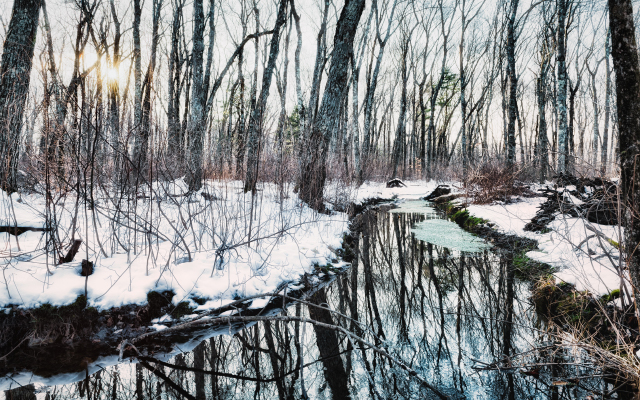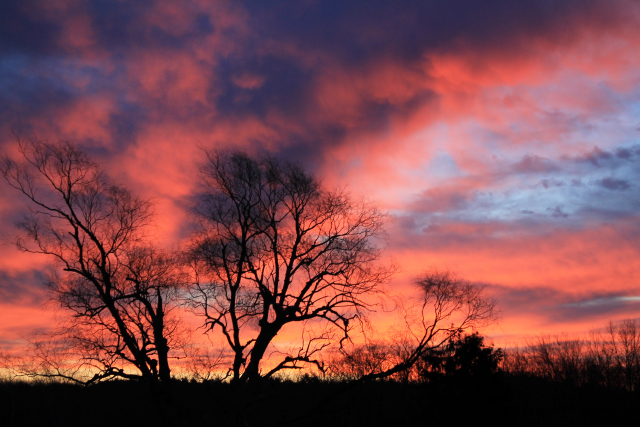After fall’s colorful foliage has faded and fallen, the bare branches of late autumn have a beauty all their own. Here are five intricate, thoughtful portraits of leafless trees from the archives of our photo contest.
Author Archives: Rosemary
Odd Ducks
Some of nature’s most colorful waterfowl visit our lakes, rivers, and shores during the colder months. Here are five stylish ducks to watch out for.
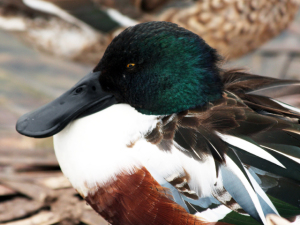
Northern shoveler © Kristin Foresto
Northern shoveler Anas clypeata
One glance at this duck’s enormous spatula-shaped bill —used for straining prey from the water—and you’ll see why people call it a shoveler. The male resembles a mallard, but with a dark bill, white and chestnut sides, and piercing yellow eyes. The female is brown-speckled, but her oversized, orange-brown bill distinguishes her from similar species. Look for this bird in fresh- and saltwater marshes.
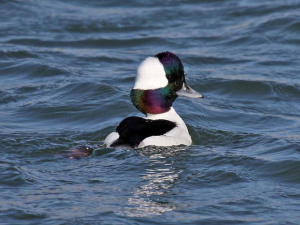
Credit Ken Schneider, Flickr user zonotrichia
Bufflehead Bucephala albeola
Why “bufflehead”? The name may originate from an old word for buffalo, referring to that animal’s big fluffy head. Regardless, it helps make this little bird unmistakable. The female is brown, with a small white streak on the side of her head, and the male is mostly black and white. In winter it’s especially fond of ocean bays, where it dives for its food.
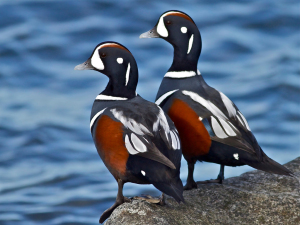
Credit Jerry McFarland, Flickr user jerrygabby1
Harlequin duck Histrionicus histrionicus
True to its name, the male harlequin duck is as colorful as a clown, and its Latin name refers to actors and the theatre. The female is rich brown with a three white spots on her face. In winter, the harlequin is often found off rocky coasts. Listen for its high-pitched squeaks, which have caused people to nickname it “sea mouse”.
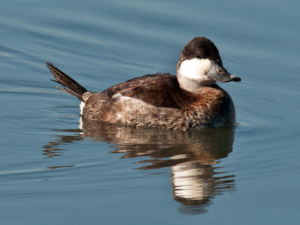
Credit Russ, Flickr user russ_w
Ruddy duck Oxyura jamaicensis
If you spot a little a duck with its tail sticking up like a hand reaching for a high five, chances are it’s a ruddy duck. In winter, the male ruddy duck loses its rusty-orange back and turns brownish; the female is also brownish, but she has an extra brown stripe under the eye. You are most likely to see the ruddy duck in lakes or on large freshwater ponds.
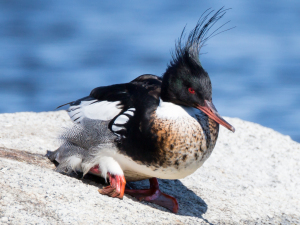
© David Peller
Red-breasted merganser Mergus serrator
This species always looks like it’s having bad hair day, and its bright red eyes give it an under-slept look. The green-headed male has a brown-red breast, and the female is mostly grey-brown. The word “merganser” comes from the Latin words mergus, or diver, and anser, meaning goose. Look for the red-breasted merganser in salt water, where it expertly catches fish with its slender red beak lined with saw-like spines.
For a chance to spot these and other amazing ducks, join an upcoming program.



